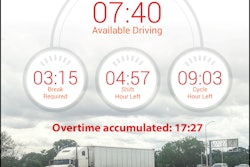The retirement readiness of Americans is bleak.
A 2015 Federal Reserve Report found that 31% of non-retirees have little to no retirement savings. In that same report, half of all non-retirees were not confident at all, or had no confidence, in their ability to choose investments. Furthermore, the average American has only $20,000 saved for retirement. Therefore, most Americans will simply not be able to afford to stop working.
The biggest factors contributing to the lack of retirement savings is lack of education, absence of workplace plans (one-third of all companies do not offer workplace savings plans), and frequent distributions from retirement accounts (raiding accounts to pay for major expenses).
Unfortunately, the same circumstances plague the trucking industry. A recent poll conducted by CCJ sister publication Overdrive found that most drivers have no retirement savings, and only 14% of drivers polled listed retirement savings as a top priority for them. With so little saved, these drivers will not be able to retire.
Here’s the math: According to Indeed the average driver’s annual income is $80,970. The largest annual Social Security annual income is $40,140. The shortfall of $40,830 will have to be met by an account balance of over $1 million.
For late-saver Baby Boomers, the hurdle to have that cool million is out of reach. However, trucking firms do have the unique opportunity to introduce and encourage their younger drivers and non-driver employees to take retirement savings seriously. By introducing a workplace retirement savings plan, the company will see many benefits. These benefits include tax credits for the first three years of committing to a plan, tax deductions, employee retention and a boost in morale. In addition, the firm owners might be looking for a way to build up their retirement accounts.
When a firm is starting up their retirement savings plan, the firm must have a well-formulated game plan for the plan to successful. The game plan is commonly expressed in a document called The Employer Policy Statement. The Employer Policy Statement (EPS) is written by the firm, investment advisor or other plan fiduciary. It should be written in plain English, explain why the plan is in existence, include quantifiable plan success metrics and other important information pertaining to the plan.
After the firm completes the EPS, the plan must be distributed to the eligible employees. If applicable, opt-in for automatic enrollment and automatic savings escalation. These two things cut down on low participation rates and low savings rates by employees. In addition, it saves an enormous amount of time on enrolling newly eligible employee paperwork and initial enrollment paperwork. After enrollment, the firm should make an effort to offer holistic advising services from a well-qualified financial advisor.
Normally, the plan runs smoothly and there are not any major issues. Many financial advisors will list their services as holistic and gladly take on your plan, but a firm should interview a potential plan advisor and ask the following:
1. Do you have an annual quota? If yes, run. Their compensation is based on new sales. Once they complete the sale, they will be forced to focus their efforts on the next sale.
2. Do you have the Series 66 or Series 6? If they have the 66, they will be able to give your employees objective investment advice. If they have the 6, they are commission-based sales representatives.
3. On how many plans are you broker of record? If fewer than five, workplace savings is not a significant component of their business.
4. What is your process for implementing and monitoring our plan? Do they have a "set it and forget it" approach? If so, the firm does not make a serious effort to meet with plan fiduciaries and discuss plan benchmarks, plan investments or plan service providers.
Avoid the mistake of not opting into fiduciary services, automatic plan features or mailing services. While these may seem like the cup holders and seat warmers for a plan, they are highly effective in cutting down the administrative burden assumed by the firm.
John Scarborough is an independent financial advisor in Houston, Texas, and can be reached at [email protected].












